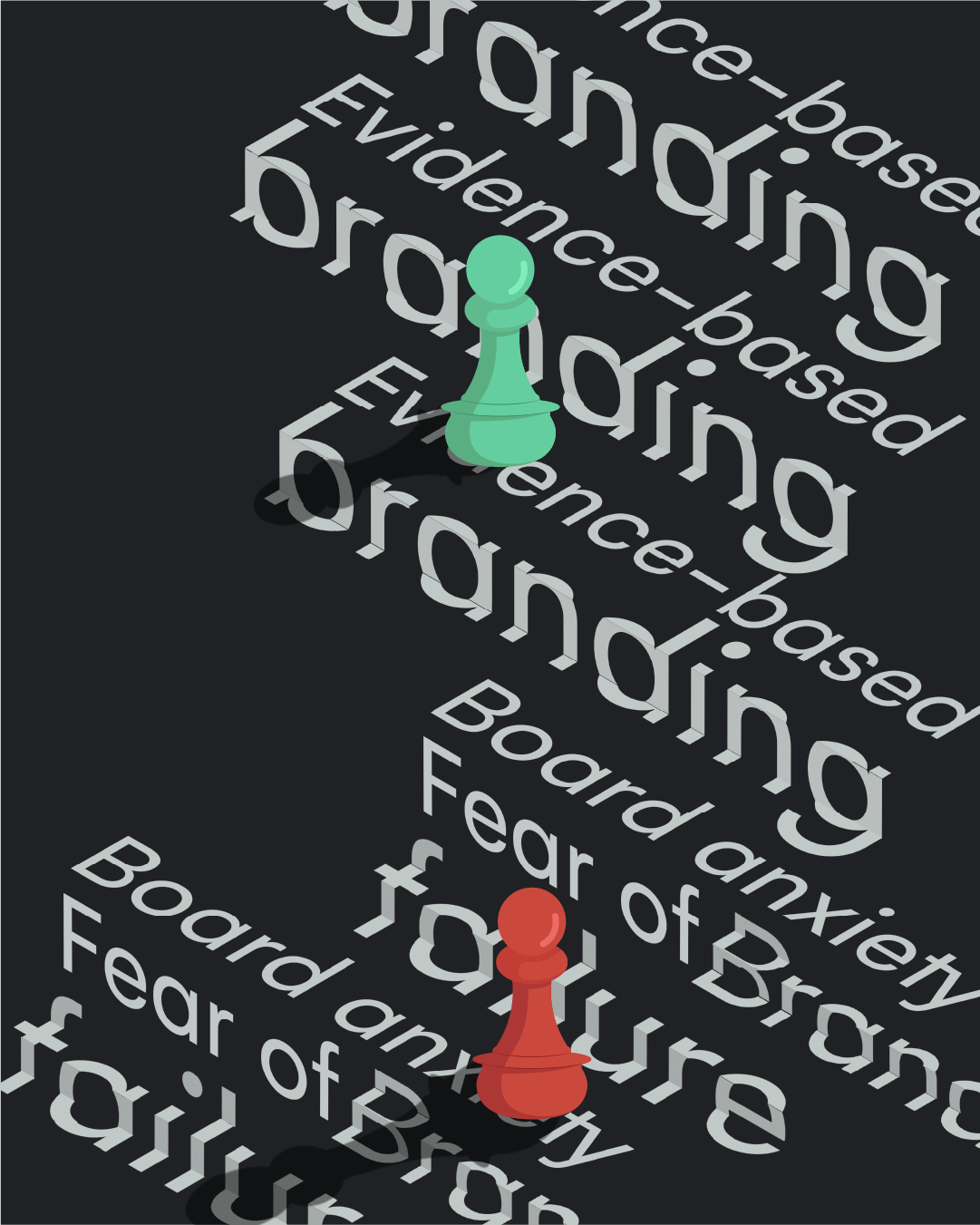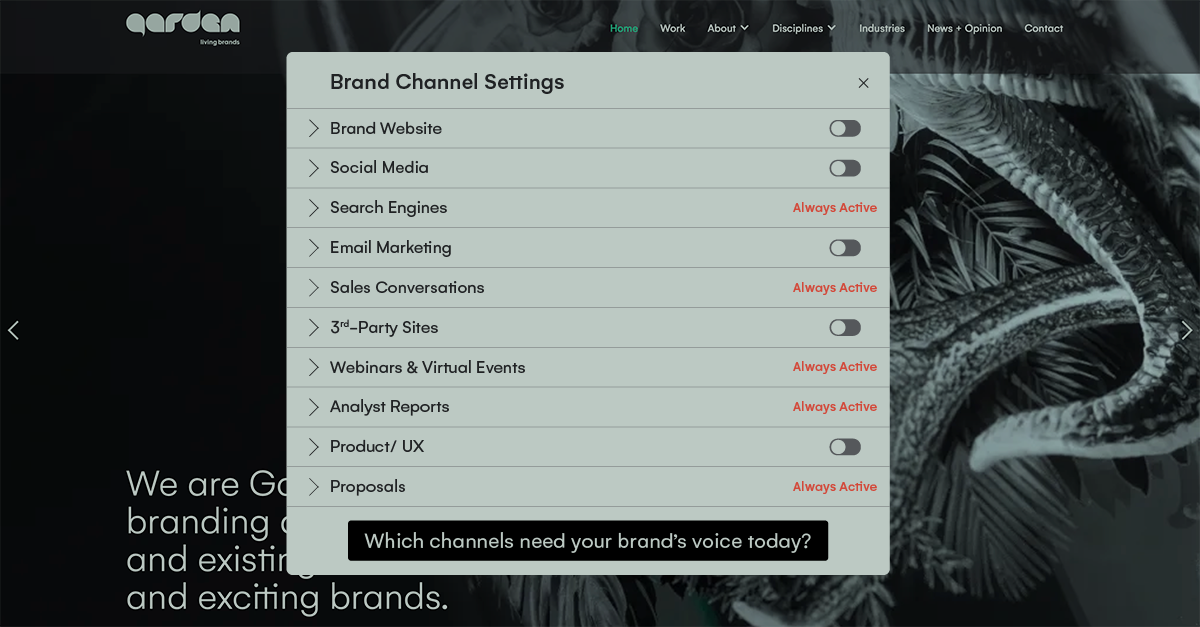How to create a brand style guide: Essential steps and examples
As brand consultants who interpret trends in human behaviour, we know that a well-crafted brand style guide is the cornerstone of successful brand communication. This comprehensive document serves as your brand's DNA, ensuring consistency and clarity across all touch points.
Whether you're a growing startup or an established enterprise, creating robust brand guidelines is essential for maintaining brand integrity and driving meaningful connections with your audience.
What is a brand style guide?
A brand style guide is a strategic document that defines the rules for how a brand presents itself. It acts as a blueprint for consistency, covering everything from logos and colours to tone of voice, ensuring every customer interaction is coherent and recognisable.
A comprehensive guide is a living document that captures the essence of how your brand looks, feels, and sounds. It provides actionable steps to build a framework that empowers teams and helps a brand scale effectively. This ensures that whether you are a marketer, designer, or founder, you have a single source of truth for building a lasting brand identity.
Why is a brand style guide important?
A style guide is a strategic tool designed for growth, efficiency, and building brand equity. It provides a clear return on investment by standardising a brand's presentation.
Streamline operations and boost efficiency
A clear brand guide is a powerful productivity tool. It reduces rework and repetitive questions between designers, marketers, and developers by providing a definitive reference point. This empowers employees and external partners- from freelancers to agencies- to work with autonomy. When onboarding new team members, the guide accelerates their understanding of the brand, allowing them to contribute meaningfully from day one. This focuses creative energy on innovation, not on correcting preventable errors.
Build brand equity and trust
Consistency is the foundation of recognition, and recognition is essential for trust. When a brand appears consistently across all platforms, it signals professionalism, quality, and attention to detail. This predictability builds brand equity over time. The consistent use of "Coca-Cola Red," for example, has made the colour synonymous with the brand itself. This level of instant recognition is a direct result of disciplined brand management rooted in a style guide.
Ensure cohesion across every customer touchpoint
A brand experience extends from a social media post and a digital advert to product packaging and a customer service email signature. A style guide is the thread that weaves a unified story across these different touchpoints. It ensures that the core brand positioning is communicated with clarity and consistency, regardless of the channel or content creator. For businesses with global ambitions, this is a non-negotiable principle for maintaining brand integrity across different cultures and markets.
Core brand identity elements
This is the heart of your style guide, detailing the non-negotiable visual components that form your brand's DNA. These foundational elements must be defined with absolute clarity to prevent misuse.
Logo guidelines
Your logo is your most recognisable asset. Your guide must provide clear rules for its application, leaving no room for misinterpretation.
- Primary logo and variations: Showcase your main logo, as well as any approved secondary versions (e.g., stacked, horizontal) and official submarks or icons.
- Clear space (exclusion zone): Define the minimum amount of empty space that must surround the logo. This exclusion zone protects its impact and prevents it from appearing cluttered. A simple visual diagram is essential here.
- Minimum size: Specify the smallest size the logo can be reproduced at for both print (in millimetres) and digital (in pixels) to maintain legibility.
- Logo 'don'ts': This is a critical subsection to visually demonstrate incorrect usage and prevent common mistakes.
Examples of incorrect logo usage
- Do not stretch, squash, or distort the logo in any way.
- Do not change the logo's colours or apply unapproved effects like drop shadows.
- Do not place the logo on a busy or low-contrast background that compromises its visibility.
- Do not alter the orientation or rearrange the elements within the logo.
Colour palette
Colour communicates emotion and personality. Your brand palette is one of the most powerful and immediate ways to convey your brand's character.
- Primary colours: These are the two to three dominant colours most closely associated with your brand.
- Secondary colours: A complementary set of colours used for accents, highlights, subheadings, or secondary calls-to-action.
- Neutral colours: A range of whites, greys, or beiges used for body text and backgrounds to create balance and readability.
- Colour codes: To ensure perfect replication, provide the exact values for each colour: HEX for web, RGB for screen, CMYK for print, and Pantone (PMS) for manufacturing.
Create a visual chart showing each colour swatch, its name, its corresponding codes, and a brief note on its intended role (e.g., ""Deep Ocean Blue: Use for primary headlines and CTAs"").
Typography
Your typography gives your brand's voice a visual form. A consistent typographic system enhances readability and reinforces your personality.
- Typefaces and fonts: Clearly define your primary and secondary typefaces (for instance, one for headlines and another for body copy). Specify the exact fonts and weights to be used. Provide links for your team to license or download the correct font files.
- Typographic hierarchy: A clear hierarchy is essential for creating scannable, user-friendly layouts. Establish firm rules for styling every level of text.
Defining the hierarchy
- Headlines (H1, H2, H3): Specify the font, weight, size, case (e.g., sentence case, title case), and colour for each headline level.
- Body copy: Define the rules for standard paragraphs, including font, size, weight, and line height (leading) for optimal readability.
- Links and CTAs: Detail how to style interactive text elements to ensure they are obvious and consistent.
- Justification and spacing: State your rules for text alignment (e.g., always left-aligned) and any specific guidelines for kerning or tracking in headlines.
When do you need a brand style guide?
You need a brand style guide when:
- Your company is growing and adding new team members
- You work with external agencies or freelancers
- You're launching new marketing channels
- You're refreshing your brand identity
- You notice inconsistencies in your brand presentation
A brand style guide becomes particularly crucial as your organisation scales. It ensures that whether someone is creating a social media post in London or designing packaging in Manchester, they're working from the same set of standards.
The fundamental elements explained
Brand guidelines are more than just a set of rules – they're the foundation of your brand's communication strategy. Think of them as your brand's DNA, containing all the essential information needed to maintain its integrity across every touchpoint.
Understanding the fundamentals
Your brand guidelines serve multiple critical purposes:
- Consistency control: Ensures your brand looks and sounds the same everywhere
- Quality assurance: Sets standards for brand representation
- Time efficiency: Provides ready-to-use specifications for any project
- Brand protection: Guards against misuse of brand elements
When brand guidelines become essential
Several key moments signal the need for comprehensive brand guidelines:
- Business growth phases
- Opening new locations
- Expanding into new markets
- Launching new products or services
- Building new partnerships
- Team expansion scenarios
- Hiring new marketing team members
- Working with external agencies
- Onboarding new content creators
- Engaging with international partners
Key benefits for business growth
Well-defined brand guidelines directly impact your business success:
- Market positioning: Helps establish a clear, distinctive presence
- Customer trust: Builds recognition through consistent experiences
- Internal alignment: Gets everyone on the same page
- Creative efficiency: Streamlines the content creation process
- Brand value: Strengthens brand equity over time
Role in brand management
Brand guidelines play a crucial part in day-to-day operations:
- Design decisions
- Provides clear reference points for creative choices
- Eliminates subjective interpretations
- Speeds up approval processes
- Content creation
- Sets clear parameters for writers and designers
- Ensures messaging consistency
- Maintains brand voice across channels
- Project management
- Simplifies briefing process
- Reduces revision cycles
- Improves project delivery times
How to assemble your brand style guide
Bring all these defined elements together into a practical, accessible, and well-designed document.
Choosing the right format
The format you choose will depend on your team's size, budget, and workflow.
- PDF: Pros: Highly portable, printable, and has a fixed layout that ensures it looks the same for everyone. Cons: Can be difficult to update and is not interactive. Best for smaller brands or for sharing with external partners like printers.
- Web-based portal: Pros: Always up-to-date, interactive, searchable, and can host downloadable assets like logos and fonts directly. Cons: Requires more initial setup and may involve development or subscription costs. This is the gold standard for larger, digital-first brands and remote teams.
- Tools: Popular tools for creating these range from design software like InDesign or Figma (for PDFs) to dedicated brand management platforms like Frontify or Bynder (for web portals).
Structuring your style guide document
A logical flow is crucial for usability. Guide the user through your brand's world in a structured way.
- Create a logical narrative: Start with the high-level brand strategy (mission, vision, and personality). Then, move to the core identity elements (logo, colour, typography). Finally, show application examples of the brand in action (website mockups, ad templates, presentation slides).
- Prioritise navigation: A clear, clickable table of contents and descriptive headings are essential. No one should have to hunt for the information they need.
Essential components checklist
Use this checklist to ensure you have not missed any critical components.
How to maintain and evolve your brand guide
Creating the guide is a major achievement, but the work does not stop there. The long-term management and evolution of the guide are what cement its value.
Launching your guide internally
A successful launch generates excitement and encourages adoption. Do not just send an email with a PDF attachment.
- Make it an event: Hold a company-wide launch meeting or a series of workshops. This is your chance to explain the ""why"" behind the strategic decisions and get everyone invested in the brand's future.
- Ensure accessibility: Make it incredibly easy for everyone to find and access the guide, whether it is a link on the company intranet or a pinned message in your team's communication channel.
- Celebrate the milestone: The launch of a new or updated brand guide is a significant moment. Celebrate it to build positive momentum.
Establishing brand governance
To keep your brand consistent, you need a clear process for how it is managed day-to-day.
- Appoint a brand champion: Designate an individual or a small committee responsible for stewarding the brand. They will be the go-to resource for questions and will be responsible for approving new creative assets.
- Create a review process: Establish a simple, clear process for teams to submit new designs or copy for review. This ensures everything that goes out aligns with the guide before it is published.
Planning for evolution
Your brand is not static; it is a living thing. Your brand guide must be designed to evolve with it.
- Schedule regular reviews: Set a recurring date- perhaps annually- to formally review the style guide. This is an opportunity to assess what is working, what is outdated, and what needs to be added or refined.
- Manage change effectively: When the time comes for a brand refresh or a major rebrand, the style guide is your central tool for managing the transition. It provides the framework for rolling out changes consistently across the entire organisation.
Notable recent brand style guides
Duolingo (2024)
Duolingo’s guide is playful and approachable, featuring its mascot and a vibrant colour palette. The document emphasises accessibility and fun, making it a strong example for educational or tech brands.
Spotify
Spotify’s brand style guide is concise and practical, detailing logo variations, colour codes, and usage in partnerships and external platforms. It’s a go-to example for digital-first brands needing clear, scalable guidelines.
TikTok
TikTok’s interactive style guide covers logo, co-branding, and typography, reflecting the dynamic energy of its user base.
Final thoughts
Creating a brand style guide is an investment in your brand's future. As experienced brand consultants, we've seen how thoughtfully crafted guidelines can transform a company's presence in the market.
Your brand style guide is more than just a set of rules—it's a living document that helps your brand grow, evolve, and maintain its unique identity in an ever-changing landscape. Want to work with us? Get in touch with our brand consultancy today.

















.jpg)





































































